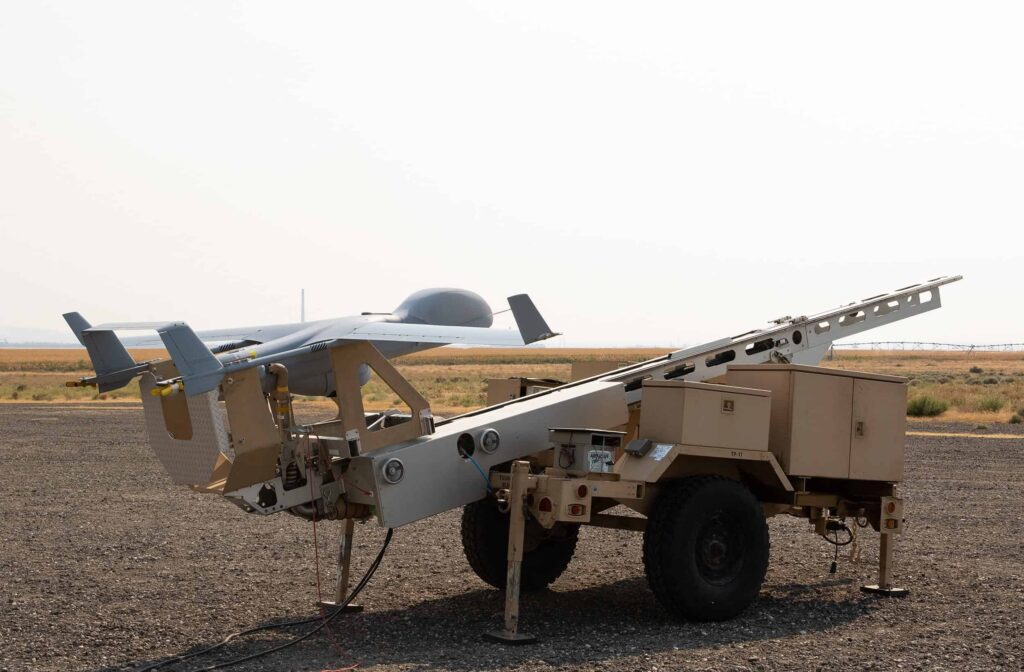Insitu has announced the launch of Integrator Extended Range, a beyond line of sight, SATCOM-enabled small UAS (unmanned aerial system) capable of ranging modern combat theaters. The new system was announced at the Air Force Association’s annual Air, Space and Cyber Conference.
The system delivers Group 4 and 5 capabilities in a Group 3 aircraft including:
- Extended range operations of 10 hours time on station at 200 nm and six hours at 300 nm
- High quality, full motion video on par with current ISR systems while flying at acoustically and visually undetectable altitudes
- Bandwidth throughput up to 10 megabits per second with a less than 1.5 second latency
- Modularity for easy integration of multiple payloads, including EW and SIGINT
- Significantly reduced manpower footprint for operations; the system can be operated by a team of 12 operators, maintainers and mission commanders.
- More secure, jam-resistant networks than traditional unmanned systems in use today due to improvements in commercial communication satellite technology
This new option enables users to save money by augmenting higher cost systems with a small UAS, freeing up the larger strike-capable unmanned assets to conduct more of the kinetic missions for which they were designed. In addition, Integrator ER will put more eyes and ears in dangerous environments around the world to give troops on the ground a common operating picture that heightens their awareness and brings them home safely.
“Insitu has always been at the forefront of customer-inspired innovation, and our exceptional team has delivered another ground-breaking capability,” said Esina Alic, Insitu president and CEO. “High quality, long endurance ISR – to include FMV and SIGINT- remains one of, if not the most requested and unmet need for the Department of Defense. With our announcement today, all warfighting units and coalition partners can have access to what was once a limited resource, getting this much-needed capability in the hands of the warfighter at a fraction of the cost of any current system available today.”



















